Whether you are a B2B empire or just entering the professional industry, you should have well-built and well-structured software to reach the local and international market. Building B2B software is a different experience for another company.
Building B2B software is far more complex than B2C as the business procedures and overall business set of B2b companies are complicated and have unique ways of serving the customers.
B2C companies serve a vast population, whereas a B2B company only serves a limited number of people already working in a business.
So, you have to be extra careful while designing B2B software as you will be creating it from a businessman’s perspective. An individual of a B2B Company is dealing with a massive revenue than an individual in a B2C company.
The software house can win the deal among B2B companies by manufacturing software that offers more customization and tailored services. For instance, building a supply chain may provide bulk pricing and credit conditions to each contractor it supplies while requiring its DIY customers to pay the total price in cash regularly.
This is because each contractor generates more income for the construction supply chain than DIY-ers. It can create more money by catering to contractors but at a cost.
Their business procedures will become more complex because of the personalized care they provide to their B2B customers.
This is just one example of your understanding of the complicated working of B2B services. Scaling a B2B firm can be challenging when each client wants individualized care. This is where technology plays a role.
When created with these customer needs in mind, Custom software can help B2B businesses expand their ability to serve more customers without having to hire more sales and support personnel.
Let’s dive into the procedure of building B2B software.
Discovering the breathtaking B2B software development
If a software product isn’t adapted to meet the specific demands of a B2B organization, it may wind up causing more difficulties than it solves.
With that in mind, here are a few technical and design considerations for product designers and developers when developing software for the B2B market.
Incorporate the Power Features
People who use B2B software are more likely to complete more complex activities than those using B2C apps.
So, while developing B2B software, look for ways to make user interaction as simple as possible. Consider powerful features like keyboard-driven data entry (rather than tapping or clicking), multiple selection processing, customizable dashboard views, extensive search and filter choices, and flexible data import and export options.
In a B2C situation, such as when users view their bank statements online, these additional features may be excessive, even harmful.
On the other hand, power features are critical in a B2B scenario — for example, a commercial accountant maintaining a complex set of books.
Search to the context
People regularly use B2C software in unusual situations, such as exercising with a fitness tracker. B2B applications, on the other hand, are frequently utilized in a wide range of unanticipated, high-pressure situations.
When B2B end customers interact with software, they put their money and reputation on the line—for a B2B application, ensuring that a design function in the course of daily activities is non-negotiable.
At Mexil, We’ve developed unique software for several B2B companies. Several of them were created for usage on the job outside of the usual office environment.
One application we created, for example, was for medical workers to utilize when rushing between hospital rooms. Every software that we make has a significant design and functionality.
The content will affect every aspect of the software, starting from the technology used, interface design, and more!
So, it is essential to design the B2B software successfully to make it behave like a lifesaver!
Easy Customer Support
The B2B software must be user-oriented, and the technology used in the software must focus on providing the best of the best to the users.
The self-service design does not work for the B2B software. The B2B users expect a non-stop and top-notch flow of work without the need to call for help. And if they do need the service, they expect it to be delivered immediately. The software you are designing must incorporate the features that deal well with the product users and provide fast customer service.
You can add the software’s chat, call, or even text extensions. This practice will enhance the efficiency of the product and attract users to your services.
High security and Privacy
Privacy and security are essential for any technological product; B2 B customers are likely to be more worried than the ordinary consumer about how their information is safeguarded.
This can entail providing on-premise hosting, ensuring that all data is encrypted in transit and at rest, conducting frequent safety checks and penetration testing, and enforcing rigorous network access and disaster recovery processes.
Best Engineering Practices
The level of attention taken to implement software engineering best practices when developing a new digital product should be proportional to the product’s complexity and size.
B2B goods are typically more complicated than B2C products, necessitating a greater focus on best practices. Consider allocating developer time to the following to ensure a smooth delivery to your client:
- Fine DevOps practices
- Durable automated test frameworks
- Hosting infrastructures that are redundant and horizontally accessible
- Clean-up sprints to optimize code and pay off technical debt as it builds up
Design for a complex role
Users in B2B apps typically come in various shapes and sizes. The same software will be accessed by multiple individuals with differing responsibilities and power levels.
Complex, flexible workflows and varying levels of network connectivity are required in software for B2B enterprises. When developing for many roles and complex workflows, keep the following elements in mind:
- Capabilities for single sign-on
- Role-based access restrictions that can be customized
- Data access in a hierarchical structure that reflects a customer’s corporate structure
- Task management system based on queues (ensuring corporate collaboration)
Surprising Advantages of a B2B Software
Innovation
You might not think of all the numerous ways software might be produced as a company. It’s also crucial to consider how your software will appear on the front and how your customers interact.
B2B software will be created according to your specifications. You’ll be able to improve existing apps by optimizing features already available in pre-packaged items on the market or by creating new features that your B2B organization requires.
For example, you’ll be able to design a solution capable of managing massive amounts of data or integrating different, unconnected operations.
Exclusiveness
An off-the-shelf solution is unlikely to meet all of the needs of a company with specific technical requirements. While there are usually similarities in corporate structure and processes among organizations – especially those in the same industry – they are not all carbon copies of one another. Building your B2B software from the ground up ensures that it will fit your specific company strategy. Furthermore, you may customize the software to look exactly how you want it to with your branding and design standards.
Compatible
Many firms use an architecture paradigm where one process’s results are used as inputs in another.
As a result, integration is critical for smooth corporate operations. Many organizations are forced to use third-party apps to improve communication, but you are not required to do so.
You can assure that the flow of data will not be hampered by any hurdles requiring clever workarounds by creating a custom environment that best suits your needs.
Versatile
Deciding to use technology in whatever way shows that you’re concerned about the success and future of your company.
A B2B software solution should provide the impetus to expand and scale your business. As your company grows, your processes will alter and become more complex.
You may need to add new employees and departments and change your working model to fit these additional jigsaw parts. You require both long-term and flexible software to develop and grow with you.
Final Thoughts – Building the B2B Software gives you a comparative edge
The software that B2B organizations use to operate their company must make the most of their specialized business offerings to help them expand financially. B2B organizations may use digital service designers and developers not just to do business faster but also to completely disrupt their industry.
B2B software is a significant investment. A great development process, hands-on user research, consistent communication, and expert designers and engineers who excel at creative problem-solving are required when creating a digital product that serves your client’s business goals and is also delivered on budget and on time.
Frequently Asked Questions
What is B2B software?
It encompasses cloud-based software businesses use for various tasks, such as accounting, office productivity, customer relationship management (CRM), and other work-related activities.
Our software development companies are considered as B2B?
Well, yes, it can be. It will be simply calling the business-to-business software company or SaaS.
What is a B2B developer?
The B2B professionals provide services and products to other businesses. Many include consultation, solutions, or other small benefits to the startups.

